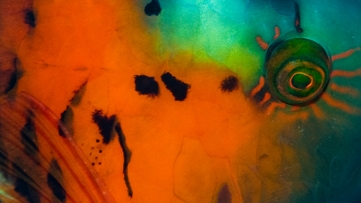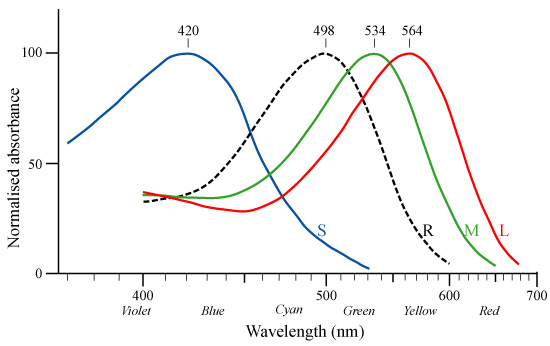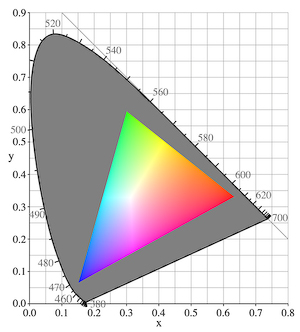
| Home |
| Colors of the Reef |
| Search the Reef |
| Science and the Reef |
| Equipment |
| New |
| Links |
| Contact |
| Interna |
Physiology – the Photoreceptors
Physiologically, we see a color if light hits the photoreceptor cells in our retina. Since sunlight has been the primary source of light throughout the evolution, the photoreceptors show maximum sensitivity in the spectral region of the maximum emission of the sun, which is yellow to green light.

There are four types of photoreceptor cells: the rod cells which are more sensitive but don’t allow to see colors since there is only one type of pigments. These cells allow as to see under low-light conditions, but everything looks grey. The three types of cone cells have different pigments and have maximum sensitivity in three different areas of the visible spectrum: red (564 nm), green-yellow (534 nm), and blue (420 nm). This allows us to see colors in the “visible” range of the spectrum between blue (400 nm) to red (800 nm wavelength).
Figure: Spectral absorption curves of the short (S), medium (M) and long (L) wavelength pigments in human cone and rod (R) cells (Source: Wikimedia)
 Consequently, mixing of monochromatic light with three basic wavelengths is enough to produce the millions of shades of colors the human eye is able to detect. (This is not completely true. Strictly speaking, only colors within the color triangle defined by the chromaticities of the primaries can be reproduced, source Wikipedia). This is exactly what happens when you look on your computer screen which emits only three basic colors: red, green, and blue (RGB colors). That means, the millions of individual wavelengths that makes the color of an object are reduced to just three wavelengths!
Consequently, mixing of monochromatic light with three basic wavelengths is enough to produce the millions of shades of colors the human eye is able to detect. (This is not completely true. Strictly speaking, only colors within the color triangle defined by the chromaticities of the primaries can be reproduced, source Wikipedia). This is exactly what happens when you look on your computer screen which emits only three basic colors: red, green, and blue (RGB colors). That means, the millions of individual wavelengths that makes the color of an object are reduced to just three wavelengths!
This explains why a photographer, who works with light as his primary medium, uses different terms to describe color: color temperature, brightness, hue etc. These terms are more suitable when dealing with the physiological effects of light, but, of course, have the same physical basis. The reason why this works so nicely is that our retina has only three color receptors which are sensitive only to these three colors.
Figure: sRGB color triangle, shown as a subset of x,y space, a chromaticity space based on CIE 1931 colorimetry (Source: Wikipedia)

